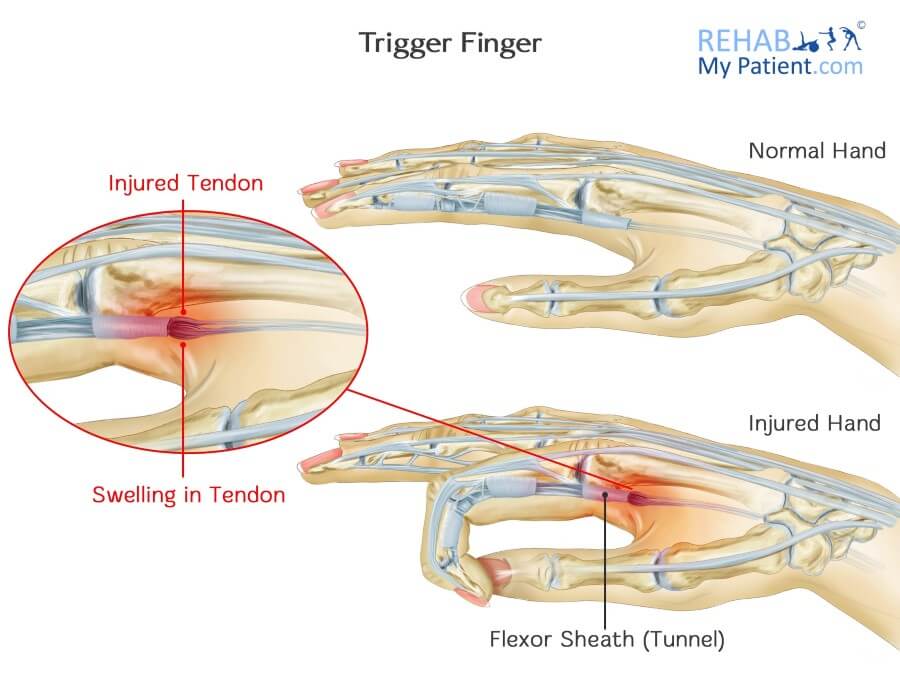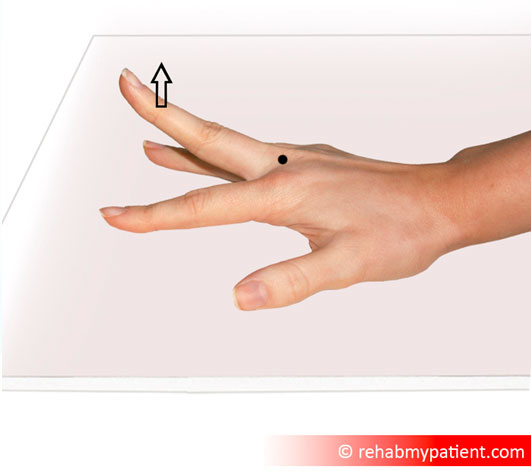Trigger Finger
Posted on 14th Jun 2017 / Published in: Hand/Fingers/Thumb

Trigger finger causes movement in the finger to be limited. Whenever you try and straighten out the finger, it will catch or lock before it can pop out straight. This condition affects the tendons in the thumbs or fingers.
The flexor tendon can become irritated when sliding through the tendon sheath tunnel. As it becomes more and more irritated, it can thicken and cause nodules to form, which makes it more difficult for it to pass through the tunnel.
The tendon sheath can also thicken, which causes the tunnel opening to become smaller. If you have this condition, the tendon will become momentarily stuck at the tendon sheath tunnel's mouth when you are attempting to straighten your finger out. You might notice a pop as the tendon slips through that tighter area and the finger will end up shooting straight out.
Trigger Finger Anatomy
All of the fingers have three distinct bones in them, while the thumb only has two bones. At each one of the joints, the bones are held into place with ligaments. Muscles within the forearm or hand turn into tendons, which attaches the bones to the finger. It is the muscles that move the fingers by pulling the tendons back. All of the bones are attached to the five metacarpal bones making up the body in the hand.

How to Treat Trigger Finger:
1. Rest
If your symptoms are only mild, resting the finger might be enough to correct the problem. You might need to wear a splint to keep the finger in a neutral position and all it the time it needs to rest and recover.
2. Medication
An anti-inflammatory, non-steroidal medication can help relieve some of the pain associated with your condition but this is only really an option for the short term, and should not be used in the longer term.
3. Therapy
Manual therapy, physiotherapy, occupational therapy or other therapists can help to treat the area. They may use massage techniques, shockwave, acupuncture, or electrotherapy to help the finger tendon.
4. Steroid Injections
It might also be necessary to inject a corticosteroid, which is a powerful anti-inflammatory, into the tendon sheath. In certain instances, this will only improve the problem on a temporary basis. Another injection will be needed. If two injections don't correct the problem, surgery might be the only option. Injections aren't going to provide you with permanent relief if you have had the condition for a relatively long time period, or if you also have diabetes and other associated medical conditions.
Tips:
- If the above options fail, you may need to consider surgery. Most people who go through surgery will be able to move the finger immediately following the procedure.
- It is entirely common for you to have some degree of soreness in your palm or occasionally your forearm.
- Recovery often takes a few weeks to be complete, but it can take as long as six months for all of the stiffness and swelling to diminish completely.
- If your finger was stiff before the surgery took place, finger exercises and physical therapy can help to loosen the joint.
- If you engage in any activities that cause an excessive amount of strain to the hand, it may make you more susceptible for you to end up with this condition.

Sign UP
Sign up for your free trial now!
Get started with Rehab My Patient today and revolutionize your exercise prescription process for effective rehabilitation.
Start Your 14-Day Free Trial